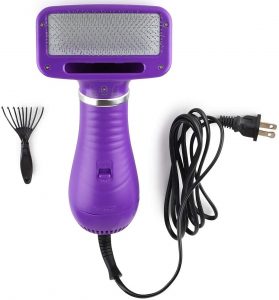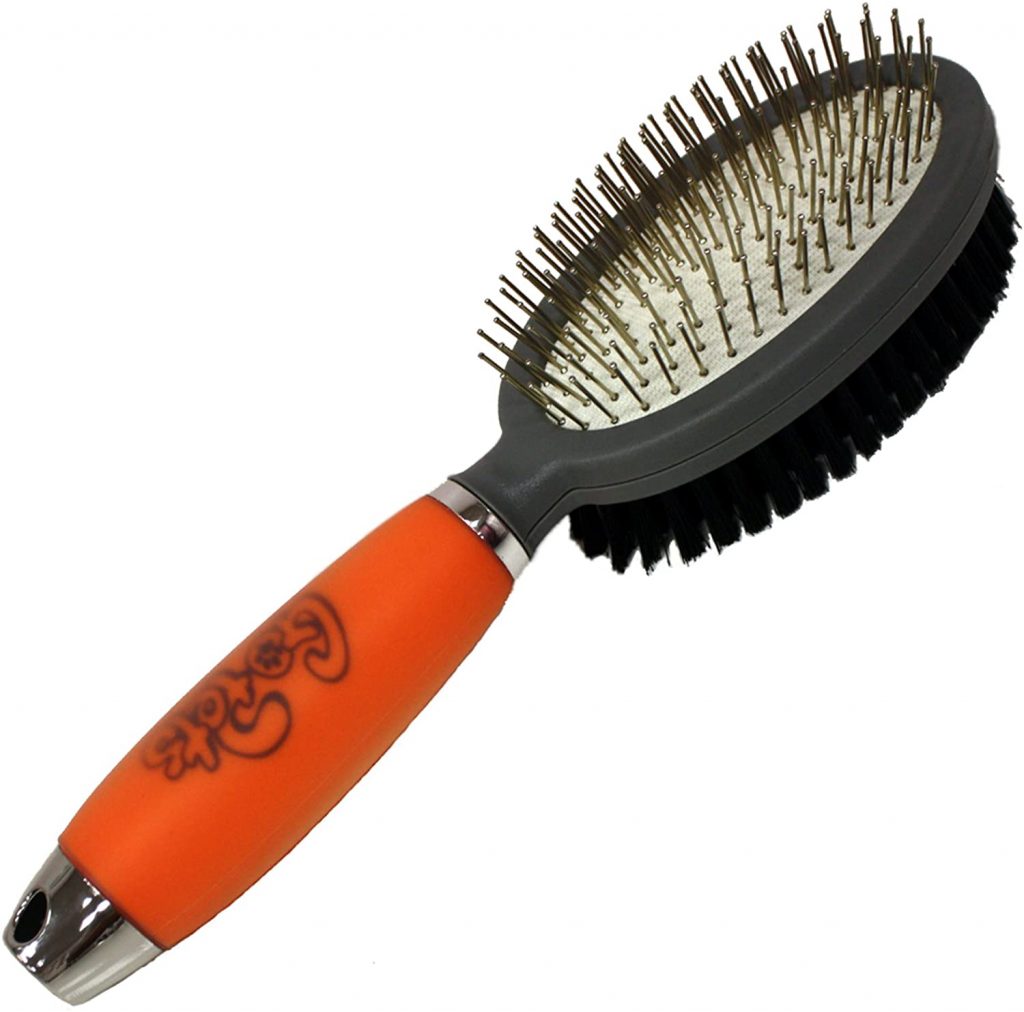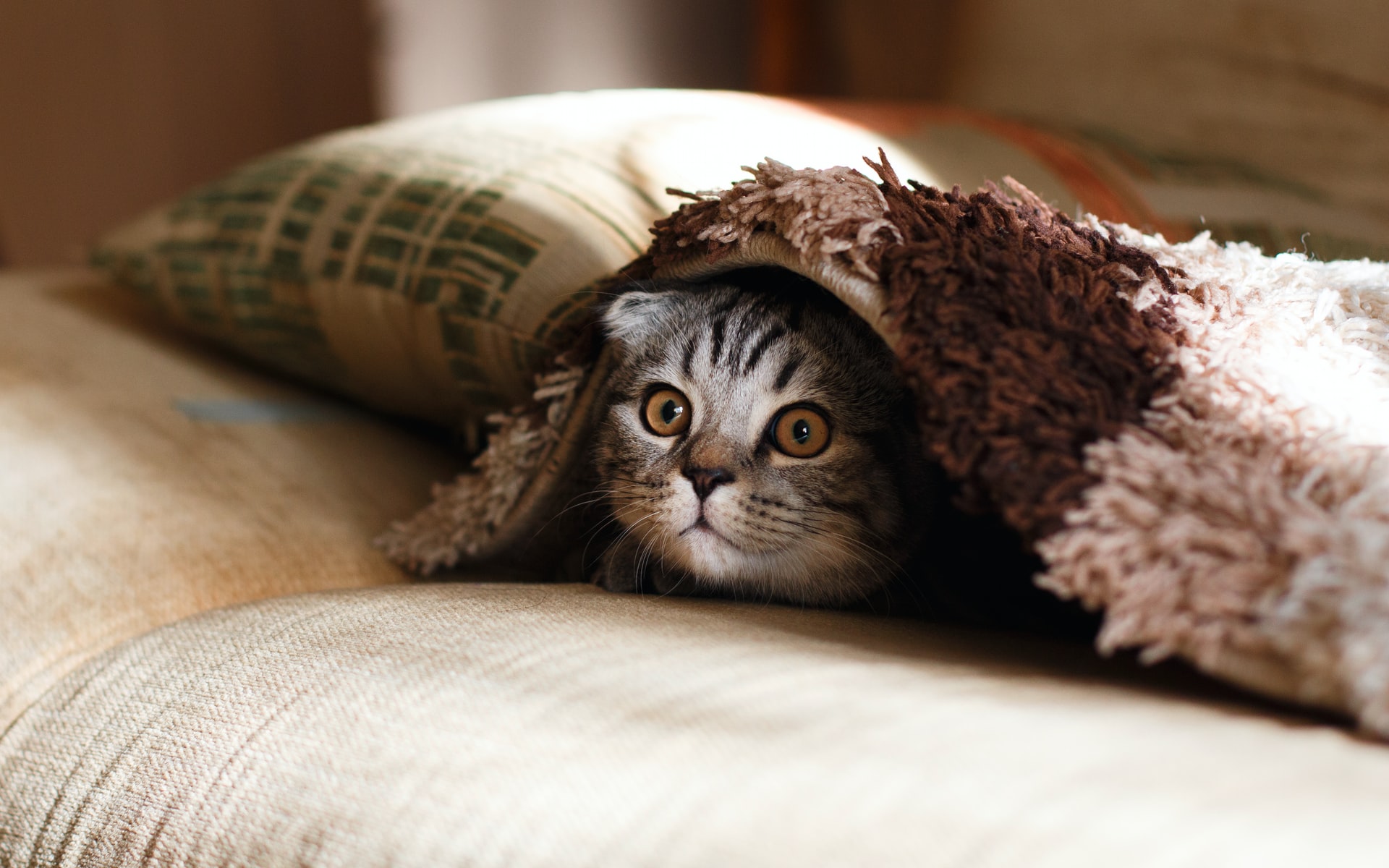While cats are self-groomers, they can make use of some assistance through regular brushing. However, not all cats enjoy the experience. Some will be sassy and grumpy, just like our three-year-old tabby whenever we have to do the ‘morning brush’. Besides developing a cat-friendly brushing routine, I recommend that you get the best brush for cats that hate to be brushed. It will help a lot in keeping your feline comfy during the grooming process.
| CAT BRUSH | BRAND | EXPERT RATING | CHECK PRICE |
|---|---|---|---|
 | Our Top Pick! Hertzko Pet Slicker Brush and Dryer Combo | Check Price | |
 | Chris Christensen Pin Brush | Check Price | |
 | GoPets Professional Double-Sided Brush | Check Price |
A cat grooms itself, do I still need to brush it?
Sure thing, cats can groom themselves. However, some have very thick and long hair that requires further care. In this case, brushing your cat will help prevent matting and tangles.
How about short and medium-haired cats? I prefer brushing my tabby because it helps a lot in managing their shedding. It helps reduce the shed hair inside our house, which is a big deal if you live with someone who has allergies or respiratory problems.
Brushing your cat daily has the following benefits:
- Shiny and smoother coat
- Prevents hairballs that can cause internal blockages
- Boosts the bonding between you and your pet
- Prevents mats and tangles, especially for long-haired cats
- Allows you to spot parasites (fleas, ticks, etc.) at its infancy
- Allows you to check your cat’s skin for bumps and other changes
- Manage shedding, so you don’t have to vacuum repeatedly
Tips in brushing your cat’s hair
Regardless if you have a feisty kitten, you need to get started with grooming early. As your kitty grows older and bigger, it gets used to being touched and handled.
The following are some grooming tips based on my experience with cats:
Start with gentle strokes
Kittens have small bodies, so before you start grazing their young skin with a slicker brush, back off for now. Start with gentle strokes to get them used to the sense of touch. For kittens, I recommend getting a smaller brush to introduce them to grooming without hounding them with a large comb.
Avoid restraining too much
Cats, regardless of age, will experience stress if you restrain them too much. Make sure that you’re not gripping your cat’s body too forcefully. Also, allow your cat to sit and move on its own terms.
Once your cat swishes its tail, it means that they need to be let go or that your strokes are getting painful. If your kitty is flattening its ears, hissing, or crouching back, you must let it relax first. Such are signs of distress.
Get the right equipment
I can’t stress this enough: not all brushes work for all cats. You have to mind the length of your cat’s hair before buying any grooming tool.
Generally, long-haired cats are best groomed with a slicker brush. Slicker brushes have thinner but longer bristles that can comb large swaths of hair at once.
Meanwhile, short to medium-haired cats are better off with a pin or a bristle brush. You can actually find a combo of these two brushes.
Aside from being efficient in combing, the right choice of brush is crucial for the safety of your feline’s coat and hair. Using a slicker brush on a short-haired cat will hurt its skin and cause wounds over time.
Brush properly
One of the most common mistakes of cat owners is brushing their felines in the wrong direction. Going against the grain of your cat’s hair is a recipe for mats and tangles.
Aside from that, brushing against the direction of where the hair grows will pull and hurt. Try brushing your hair from the back to the front. It’s not comfortable, and you’ll spend hours getting those tangles out.
Also, it’s easier to brush a cat if you go along the direction on which their hair grows. They will struggle less and will get used to grooming faster.
Remove mats properly
If you encounter some serious snags or mats on your cat’s hair, don’t pull at it. Pulling on the tangled hair will only hurt your cat. Also, the tangle will become worse if you try to brush through it.
For minor mats or tangles, you can use a detangling solution for cats. Make sure that the formula is non-toxic and safe for cats. However, if the matting is intense, you should bring your kitty to a groomer to have it appropriately clipped.
Brush it dry
Lastly, brush your cat once its hair is dry. This is the same logic with human hair. Wet hair is prone to shedding and tangling.
If you’ve just bathed your cat, dry its hair first. I use a brush with a built-in dryer for our tabby and Scottish Fold. But for cats with longer and thicker hair, I recommend that you get a separate dryer.
If you’re thinking that spraying water on a matt will help it break, you’re wrong. My best friend tried this on her Maine Coon, and the tangles just got worse.
Cat Brush Buying Guide
If you’re looking for the best brush for cats that hate to be brushed, you must look for the following. I made it simple so you can shop right away:
Get the right type
Again, you must get the right type of brush based on your cat’s coat. Here’s a quick rundown of brush types and to which it suits:
Slicker brush. Perfect for long-haired cats
Pin and bristle brushes. Ideal for short to medium-haired cats, can be used on long-haired cats once tangles are removed
Double sider. A combo of a pin and bristle brush, perfect for almost all cat hair types
Mitt brush. Novelty brushes that are ideal for cats with sensitive skin as well as kittens
Rubber brush. This has rubber teeth and ideal for massaging and light brushing
Opt for an ergonomic handle
Brushing can be an exhausting task, especially if your pooch hates grooming. Make sure that you get a brush with a long and contoured handle. This is easier to hold and will last longer than other designs.
Check the size
Next, you must check how big the brush is. For large cats, you may want a bigger brush head that can comb large amounts of hair on each glide. For smaller cats and kittens, opt for a smaller one for the meantime.
One thing about the size: avoid very thin handles. It will be a pain to use.
3 Best Brushes for Cats That Hate to Be Brushed
OUR #1 CHOICE
OUR TOP PICK: Hertzko Pet Slicker Brush and Dryer Combo

Product Name: Hertzko Pet Slicker Brush and Dryer Combo
Product Description: For long-haired cats, I recommend the Hertzko Slicker Brush. This is a 2-in-1 grooming brush with a built-in blow dryer. So while you glide the brush through your cat’s hair, it dries moisture after a bath or when the pooch got soaked in the rain. Moreover, it’s also equipped with a heating feature that you can set in high or low settings. The same goes for the airflow if you’re using the dryer. If your feline’s hair is dry, you can use this as a typical slicker brush. What I like the most about this slicker brush is its angled wire bristles with rounded plastic tips. It prevents the bristles from grazing the cat’s skin.
Offer price: $$$
Availability: InStock
-
Efficiency
-
Ergonomics
-
Overall Quality
-
Value for Money
Overall
Summary
While using the dryer, I like that it has a low-hum motor that will not scare a cat, unless your pet is really an anxious kitty. Aside from that, it comes with an extra-long power cord that’s about 6-feet long.
Another feature that I like about this brush/dryer is the easy-to-remove dryer filter at the bottom of the handle. By the way, the handle is comfortable to hold even when grooming large cats.
Lastly, it comes with a small rake brush to help remove the hair that will get trapped on the bristles.
Pros
Blow dryer and brush in one
Easy to remove dryer filter
Long power cord
Cons
None so far
RUNNERS-UP
Chris Christensen Pin Brush

For medium-haired cats, we recommend the Chris Christensen Pin Brush. It has 35 mm pins made of lightweight but durable beech wood. This gives the brush a natural color and a very stylish look.
The body and handle of this brush are also made of wood dyed with black color for an elegant finish. What I like the most about this brush is it has more pins than the usual pin brush I’d find in the market. The tips are gold plated and aren’t sharp, which will not injure a cat’s skin.
This brush is 9 inches long, which is suitable for most users and cat breeds. Also, the pins are attached to a flexible cushion that backs the pins whenever you are combing your feline.
I’ve sent this as a gift to my brother’s Persian cat, and he’s quite surprised that the kitty loved out. His cat hates grooming, which is why this pin brush is really heaven-sent.
Since it’s made of wood, it really lasts long. The trapped hair is also easy to remove since the pins have a smooth surface. It’s a little pricey, but I don’t mind adding a few more bucks for this high-quality cat brush.
GoPets Professional Double-Sided Brush

If you’re looking for a pin and bristle combo brush, my personal favorite is the GoPets Double-Sided Brush. The end of the pins on this brush is rounded and will not hurt your feline. I also like the silicone handle that gives nice traction when combing thick cat hair.
The bristle brush side is fine and suits short-haired cats well. Both sides are made of nylon, which will last long. You can also wash the entire brush to keep it clean.
Also, I use this brush whenever I have to apply oils or treatment on my tabby’s coat. The bristle brush works well in spreading topical products while the pin brush is useful in massaging the skin further.
Overall, I think this combo brush is a must-have regardless of your cat’s hair length.
The thing I like the most about Go Pets is they have a replacement or refund guarantee if you’re not happy with the quality of the brush. For an affordable grooming tool, this guarantee is a convenient addition. On top of that, GoPets donates a portion of their sales to animal rescue and no-kill shelters.
Frequently Asked Questions
Q: How often should I brush my cat?
A: If your cat has long hair, brushing twice a day is advisable. Meanwhile, for short and medium-haired cats, once a day should be enough. This should keep their coats shiny, tangle-free, and healthy.
Q: Do cats feel better after brushing their coat?
A: Some cats like the brushing sensation because it feels like a massage. It also boosts the circulation on their skin, making their hair healthier. However, some cats loathe brushing because they are not used to the sensation.
Q: Why does my cat run away or meows loudly when being brushed?
A: It’s possible that your cat is scared. The kitty may have had a bad experience with a brush before, or you probably stroked too forcefully the last time you brush your pet. The key here is desensitizing your cat and preparing some treats handy.
Q: Will the FURminator tool hurt my cat?
A: The FURminator is designed for a painless deshedding experience. However, it will hurt your cat if you don’t use it properly. Always follow the instructions on the label and avoid using the FURminator too often.
Q: Does brushing my cat help with allergies?
A: Brushing your cat will help reduce the amount of hair that falls around your home. It also reduces the airborne dander that can trigger allergic reactions. Also, you should perform the grooming outdoors if someone in your home has allergies.
Final words
Cats are natural groomers, but you can help your pet stay cleaner by brushing them regularly. It will also spare your home from balls of shed hair, which can trigger allergies. For this job, you must invest in the best brush for cats that hate to be brushed. It’s a handy tool that will last for years.

